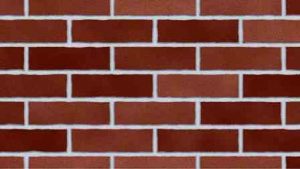Researchers Develop Low-Carbon Bricks for Energy-Efficient Buildings
Energy efficiency brings a variety of benefits which include reducing greenhouse gas emissions, reducing demand for energy imports, and lowering costs on a household and economy-wide level. Emphasis is placed on energy-efficient design and construction of energy-efficient buildings without compromising on the comfort of the occupants of such buildings. However, developing effective materials is needed for this purpose.
demand for energy imports, and lowering costs on a household and economy-wide level. Emphasis is placed on energy-efficient design and construction of energy-efficient buildings without compromising on the comfort of the occupants of such buildings. However, developing effective materials is needed for this purpose.
Researchers at the Indian Institute of Science (IISc), Bangalore have developed a technology to produce energy-efficient walling materials using construction and demolition waste and alkali-activated binders. These are called low carbon bricks, do not require high-temperature firing, and avoid the use of high-energy materials such as Portland cement. The technology will also solve the disposal problems associated with C&D waste mitigation, said the Ministry of Science & Technology statement, released on Thursday.
IISc researchers have devised a method for producing alkali-activated bricks/blocks by utilising fly ash and furnace slag. They developed low embodied carbon bricks from construction and demolition waste through an alkali activation process using fly ash and ground slag and characterising the thermal, structural, and durability characteristics of Low carbon bricks and their masonry.
Also Read : Into the (Not So) Unknown: Business and Human Rights
After ascertaining the Physico-chemical and compaction characteristics of the construction and demolition waste, the optimum mix ratios of the materials were obtained, and then the production process was evolved to produce low carbon bricks. Based on the optimum binder proportions, the compressed bricks were manufactured. The bricks were examined for engineering characteristics.
The masonry units are manufactured either through the process of firing or using high-energy/embodied carbon binders such as Portland cement. The annual consumption of bricks and blocks in India is about 900 million tonnes. Besides, the construction industry generates vast amounts (70 –100 million tonnes per annum) of construction and demolition waste.
“To promote sustainable construction, two important issues need to be addressed while manufacturing the masonry units – conserving mined raw material resources and emission reduction, researchers,” said researchers.
“A start-up has been registered which will be functional within 6-9 months to manufacture low carbon bricks and blocks with the technical support from IISc. The start-up unit will act as a technology dissemination unit through training, capacity building, and providing technical know-how for establishing such commercial units across India,” remarked Prof. B V Venkatarama Reddy, IISc Bangalore.
Conventionally, building envelopes consist of masonry walls built with burnt clay bricks, concrete blocks, hollow clay blocks, fly ash bricks, lightweight blocks, and so on. The envelopes spend energy during their production, thus incurring carbon emission (i.e., possess embodied carbon) consume mined raw material resources which lead to unsustainable constructions.
The major beneficiary of this development undertaken by IISc, Bangalore with funding from the Department of Science and Technology (DST), Govt. of India, is the construction industry in general and the building sector in particular. This technology will also mitigate the disposal problems associated with the construction and demolition wastes. (India Science Wire)
